Understanding Pre-Meeting AnxietyIf you are a nonprofit leader and have a tough meeting coming up, you will want to feel empowered going into it. Tune into Sandra's story to build your confidence going into challenging conversations! Sandra's Story: Facing the Fear of a Tough MeetingWhen Sandra came to our coaching call, she was preparing for a meeting with the Executive Director about her performance. Sandra was dreading the meeting. She knew her boss would make her feel stupid, small and even scared.
But that's not how Sandra anticipated the meeting was really going to go down! Sandra knew she would feel attacked by her bossSandra knows that "help" from her boss is typically in the form of them pointing out:
Sandra's anxious thoughts were almost out of controlEver since Sandra's boss had scheduled the meeting, Sandra had been rolling around the worst-case scenario in her mind. She imagined being fired on the spot, being raked over the coals and being belittled, berated and bullied. Hence, the knot in her stomach! Sandra had a history of not feeling supported by her bossIt's no wonder Sandra was dreading the meeting! Past meetings had not gone well. Most of what Sandra feared had happened in the past.
It was time for Sandra to change her perspectiveJust because that is how Sandra's ED has communicated in the past does not mean that Sandra has to believe it means she is incompetent or not cut out for leadership. Sandra can choose to pick between the well-intentioned but still hurtful comments and find out what's valuable in between those comments. Sandra took back control of her thoughtsWhether it is this conversation with her boss or another, Sandra gets to decide how she will proactively continue to grow and develop in her nonprofit leadership role. Shifting Your Mindset for ConfidenceSandra enlists the support of her nonprofit coachSandra brought this upcoming conversation to our coaching call. In past coaching sessions, we'd already talked about mindsets, perspectives and lenses, so she knew her mindset mattered most! To plan to feel more confident in the upcoming conversation, we took a look at the kinds of messages Sandra's boss might share:
The Power of Perspective: Changing Your MindsetLeadership MINDSET # 1If Sandra chose to see herself as flawed, she would take these kinds of comments to heart. Imposter Syndrome would take over, and the knot in her stomach would grow to a tightening in her chest. Sandra could see how her thoughts could snowball:
Leadership MINDSET #2 (THE BETTER OPTION)I invited Sandra to PAUSE, and take a breath. I asked what might happen if she chose to hear the messages differently. Sandra PONDERed and considered the comments above and then what else might be true:
Mindset # 2 helps Sandra feel more confidentSandra then used curiosity to PIVOT to new thoughts:
Instead of feeling beaten down by taking time to move through the Inner Guidance Cycle, Sandra felt back in control. She was ready to take the core of the feedback (too much overtime) and hear it for what it is—Feedback. Believing in Your Potential: The Foundation of ConfidenceHow does this help Sandra remove the knot in her stomach before the meeting?By knowing she has control of her thoughts, choosing how to hear messages and intentionally choosing not to take things personally in the meeting but focus on the content, Sandra lessened the emotional charge going into the meeting. When Sandra chooses her thoughts, she feels her confidence soar!I reminded Sandra that feeling confident in a meeting isn't about what someone else says or thinks. Sandra smiled and nodded. She's been reading Mastering Confidence. I know, she said, it's what I believe. How confident you FEEL starts with what you BELIEVE.What you believe about yourself is what matters most. I asked Sandra:
I reminded Sandra that if she believes those things, the tone with which her boss shares those messages in that meeting is less relevant than the content and what she chooses to hear, believe and take action on. Creating an If/Then Plan for ComposurePreparing for Triggers: Sandra's If/Then StrategyWhile feeling more confident, Sandra was still worried about being triggered and losing composure in the meeting. Sandra wanted to prepare to stay composed in her talk with her ED. She'd recently reviewed the webinar: How to Prepare for a Tough Talk so you can handle it with integrity in The Training Library. She'd learned the power of being prepared for getting triggered with If/Then plans. She asked if I could help her prepare an If/Then plan in case she got triggered. Sandra already knew what kind of comments might trigger her and cause her to lose her composure.
We prepared her If/Then plan and she practiced saying her response.
Now, the knots have turned to butterfliesSandra was still nervous but felt way more confident and in control of her responses! She messaged me later and said the meeting was still hard, but she left feeling in control of herself, her responses and her future. What's Next? Taking Charge of Your Leadership JourneyWill you do what Sandra did? If you want to ditch the knot in your stomach before your next uncomfortable meeting, then you need to get ahold of your thoughts and emotions before you go into the meeting. You need to create a mindset that allows you to take back power, your personal power. That way, you will be able to respond in a way that makes you feel empowered, and you'll be able to handle your meeting more confidently, too! ❗️❗️VERY IMPORTANT NOTE❗️❗️
I am not condoning bullying or harassing behaviour. If that happens, you must decide how to address it, find mental health support, and/or change jobs. There is no one-size-fits-all plan for how you will deal with it. Just know that you have options if your workplace is not psychologically safe. Check your policy manual for direction on what to do within your organization. Online resources
You may also find these podcast episodes helpful.
0 Comments
If you are like most leaders, you've been here: You have a precious break in the day, so you look at your endless to-do list. All tasks seem important, but you scan the list, looking for the priority items you can knock off in a few minutes. As you glance at each item, you make a mental note:
Your to-do list is like an emotional roller coaster In the time it takes to scan down the list, your emotions move from overwhelmed to anxious, then annoyed and doubtful, ending with discouraged. Pushing the to-do list aside, you begin scrolling through your inbox without realizing you've avoided doing anything on the list and, as a result, get further behind and more disheartened 😩 I get it. I've been there many, many times too! In fact, if you are like most leaders, you have a lengthy to-do list that haunts you into the wee hours of the morning and, honestly, will never get done. But why is it that we will never get through our to-do list? 💥The reason your to-do list will never get done is twofold REASON # 1 First, it's a disorganized list that is more of a holding place than a completion place.
REASON # 2 Second, we look at the list as items that need time to be completed, and we blame lack of time as the enemy 😡 ⏰ It's way more complicated than just not enough time. For example, look at your to-do list and consider:
Without taking all of that into consideration, our to-do list becomes an impossible challenge, and time becomes the enemy. But time is getting a bad rap. ❌ It's not ⏳ time's fault. The time available to complete tasks is only one small factor in managing our to-do list. There are other things to consider. Below are three steps to help you manage your to-do list with much greater success👇🏻 QUESTION: How do I get done, what matters on my to-do list? ANSWER: You create order and awareness. 1) First, start by prioritizing your to-do list into some semblance of order That way, your to-do list can become a tool working for you instead of a threat against you. 2) Next, let go of inappropriate expectations of your to-do list You change expectations of your to-do list by shifting your mindset from believing your to-do list is a list of things that need doing to a holding place for projects and tasks.
3) Finally, move a few key items to each day's agenda, plan or priorities When you only have three things to get done each day, you will check them off with greater speed and satisfaction.
But we are still overlooking something That covers the tactical side of getting through your to-do list. But there is something bigger that needs addressing. 🐘 The elephant in the room is the emotions you felt when you scanned the list.
Your emotions play a big role in productivity Many of us are unaware of our feelings, let alone how our emotions affect our productivity. We can choose our responses better by slowing down and getting a better awareness of what we are experiencing and how our emotions distract us from getting done what matters most. If you want more help with this, read this next: Why Your Emotions Are Sabotaging Your Productivity If you've been meaning to
NOW is the time to plan HOW you will do that 👆🏻 growth.
Understanding and honouring your values is crucial to a leader with authenticity and integrity. As a non-profit leader, your values serve as the guiding principles that shape your decisions, actions and the overall direction of your organization. Here are some examples of how your values may clash with others, get in the way of your work or cause you to feel inner turmoil. Potential values clash: When hiring new staff: Your values of diversity, inclusivity and fairness may rub up against your value of efficiency when the diverse hire has less experience and will take more upfront work to become an efficient worker. You'll have to decide which way to lean, knowing one of your values will need to be deprioritized, which makes you feel icky. Fundraising events Perhaps in your organization, the typical fundraising event includes alcohol. However, you have strong values around addictions and supporting those with addictions and minimizing alcohol at social events. Now you need to communicate that to your board, which heavily relies on this event for program funding. Program Development You value well-thought-out decisions and take time to think critically about the risks, steps and impact. However, others on your team are frustrated with your need to pick apart everything and want to move the decision-making process along more quickly. These differences are creating tension. Conflict Resolution Maybe your open communication, respect, and fairness values guide your approach to conflict. Others, who are uncomfortable with conflict, see your approach as aggressive, and they become defensive or shut down. Now the tension is building rather than diminishing. Organizational Culture You may value trust, teamwork, and personal growth and want to focus on those elements to foster a positive and inclusive work environment. And, there is no time. You are short-staffed, find yourself running from meeting to meeting and struggle to find the time to connect in a meaningful way with your team embers. In each scenario, taking the time to reflect on your values can help you make decisions and take authentic, aligned, and impactful actions for yourself, your team, the organization and the communities you serve. But only if you are self-aware and take time for self-reflection. Values identification is an ongoing process Your values and what they mean to you change over time. Understanding how your values fit into your life and how you define them will also evolve. Therefore identifying your values is not an exercise completed once in your life. Instead, you must return to your values and review them regularly. Verifying your values is more than a sit down once; power through and figure it out exercise. It also needs time, energy and curiosity. The work will be reflective, thinking and pondering. It will be emotional work as you explore memories and possible scenarios. You won't fully understand your values in one chunk of time but over time. So come back to the process of verifying your values again and again. Each time you do, you will deepen your understanding of what your values really mean to you and why they are so important. The steps to identify your values 1️⃣ List your top values 2️⃣ Define what your values mean to you 3️⃣ Determine how your values show up in your leadership and life 4️⃣ Create a system for knowing if you align with your values or are off-kilter 5️⃣ Rinse and repeat 🟡 Step # 1 - Identify Your Values There are no right or wrong values. Remember, they change, and how you define them may change. Also, this is the first glance. You will be going deeper, so how you name and describe your values may change as you do that. 🟪 Review the list of value words found here
To confirm that you have nailed your values, look for an emotional connection.
Reminders about identifying your values
🟡 Step # 2 - Define what they mean to you Now it's time to take a deeper look at your values. Those words you circled are just that, words. But what do those words mean to you? Consider these questions:
An example of how values show up For example, you may know that it is important for you to keep the peace. You value cooperation and collaboration. So despite differences on a team, you have a habit of smoothing things over. Over time you may notice your underlying irritation building with one team member as you work together on a project. You keep trying to collaborate, cooperate and keep the peace but feel frustrated each time you walk away from that conversation. This agitation may be because your value of harmony keeps you from addressing a conflict with that peer. But now, that conflict has morphed, and you feel anything but harmonious! Maybe you come from a long family of fighters. Yelling matches at the supper table was the norm. Over the years, you became the peacemaker working to create harmony wherever you could. Now that pattern of behaviour is showing up at work. And it's not always helpful. What's more, you don't even realize how that one word that means so much to you, harmony is actually what is causing you grief! Until you unpack what harmony really means to you NOW, you won't be able to use it effectively to live. You don't have to go to counselling or therapy to move forward. Although, please, if you need it, get help. There is nothing shameful about resolving your unresolved childhood or adulthood stuff! The bottom line is that you need to become more aware of how that value creates belief and ways of engaging now and consciously decide what you want to do about it. The verification process You must explore different facets of your values to help you flesh out what you mean. Remember, this is exploratory work, reflective work and emotional work. As you explore your values, here are some questions to consider:
🟡 Steps # 3 - 5 ● Determine how your values show up in your life ● Create a system for knowing if you align with your values or are off-kilter ● Rinse and repeat Determining how your values show up in your leadership and life and creating a system for knowing if you align with them or are off-kilter takes more time and intentional self-reflection. Stay with it, and over time you'll become clearer and find your values are guiding you more and more. 🆘 Extra help to verify your values In Values Verification, I walk students through exercises to identify their values and create a working definition of what that value or word group of values means to them. We explore how you use your resources to express your values (i.e. time, money and energy) and how to live and lead aligned with values. The course is one of many courses in The Training Library membership site. Do the inner work and use your values as your guide Values are the glue that holds us together, the things that we hang our decisions on, the place that we get furious when they aren't upheld and the thing that makes us feel at peace and content when they are really honoured. But again, values are not simply a word. Instead, values are deep-held beliefs etched into our lives over time and through events. Do you often struggle to get everything completed on your to-do list? Unfortunately, there is always too much to do, and many nonprofit leaders, perhaps you included, feel overwhelmed, overworked and overextended. NOT HELPFUL: Just learn to manage your time better Most of us blame this on our workloads, jam-packed calendars and the crazy amounts of external stimuli around us. There's always another meeting to attend. Something is always being added to our to-do list, and the notifications keep reminding us that we have another message, email, or request. How on Earth is anyone supposed to get anything done with all of that going on? The solution to this always comes back to being better at prioritizing and time management. And while these are essential strategies and tools to learn, there's an underlying reason why they are often less than effective. In truth, prioritizing and time management can help, but they may not be enough! HELPFUL: Learn to manage your emotions that are sabotaging your productivity. In truth, it's our thoughts that slow us down. Our mental chatter 🤯 often encourages us to procrastinate and distracts us from what matters most. Our thoughts keep us distracted!!! The word "distracted" has its origins in the Latin word "distractus," which means "drawn apart" or "divided." For most of us, this means being unable to pay attention to the task at hand, focus on what we should be doing or concentrate on the job in front of us. As a result, we feel divided and wish we could clone ourselves to get more done! Perhaps we need to become inDISTRACTable, as Nir Eyal advocates in his book "InDISTRACTable: How to Control Your Attention and Choose Your Life." Eyal explains that being "distracted" is not just a product of external factors but also internal factors such as our thoughts, feelings, and beliefs. Becoming inDISTRACTable Eyal defines distraction as "the action of derailing attention from what we intend to do" and argues that becoming "indistractable" requires understanding why we become distracted in the first place. Eyal identifies four primary triggers of distraction:
It's time to gain some TRACTION I want to focus on the words traction and distraction to help you become more aware of how your thoughts are getting in the way of your productivity. Consider how Eyal describes the difference here: The Opposite of Distraction is Traction.
Get clear on what the emotional connection is If you struggle to get things done, it's time to look at what is distracting you. The emotional connection to a task may be what's holding you back.
Work through the Inner Guidance Cycle to identify what is going on How do you deal with emotional distractions? You work through The Inner Guidance Cycle! You PAUSE and do self-reflective exercises. You take time to PONDER, exploring those thoughts and beliefs and the connection they have to what's on your to-do list. When you ask yourself what am I being distracted from, go deeper than the task you see at the surface level. Ask yourself:
When you explore these thoughts, feelings, emotions and triggers, you'll figure out why you've been avoiding them. That's PIVOTing your perspective. That shift in thinking helps you to take the action that moves and allows you to gain traction and do what you know you should do, aka PROCEEDing. Unpacking thoughts, emotions, and beliefs in action Listen to this podcast if you want to hear a beautiful example of this in real life. Brene Brown is being walked through the Immunity to Change Model by Lisa Leahy. In the episode, Brene discovers her blind spots and hidden biases that she wasn't aware of until she went deeper. Immunity to Change Podcast, Part 1 of 2 Immunity to Change, Podcast Part 2 of 2 Do the inner work to become more productive It is absolutely true that we all have too much to do and will never get it all done. We must learn time management strategies and be excellent at prioritizing. ⭐️ But to go along with that, we also need to learn to manage what's happening in our heads. PAUSE to do the inner work. PONDER and explore what's going on inside your head When you do, you'll find shifts in your perspective, allowing you to PIVOT Then you can PROCEED with courage doing what you know you need to do most. Learn more about The Inner Guidance Cycle here. Are you ready to transform your approach to time management? Join "The Emotions of Time Management" course designed exclusively for women leaders in nonprofit organizations. In it, you'll: 1- Master Proven Time Management Strategies: Learn 3 powerful time management strategies 2 - Identify Hidden Roadblocks: Uncover the emotional barriers holding you back from effective time management 3 - Create Lasting Change: Learn practical tools and actionable steps to integrate time management practices into your daily routine Learn more about The Emotions of Time Management here If you've been dealt another blow like staff shortages, funding cuts, dealing with disciplinary action, or general overwhelm, you might start to feel negativity wash over you.
You know that negativity can spiral if you don't catch it so you might be wondering:
How can I stay positive? Questing how to stay positive is the theme of my clients this week. They want to know how to stay positive and motivated, and move towards their goals when they feel tired, overwhelmed and challenged. One client is working on a certification process. She is studying for the next level exam. Yet, time is already running away from her. She is quickly becoming stuck in not-enoughness.
Another client is in the process of starting a new program and isn't sure if she can pull it off within the deadline. Self-doubt has crept in and is robbing my client of her confidence. A third client was dealt a nasty blow at work. She's feeling insecure about her future. It's hard not to be negative and sarcastic. "Why bother trying so hard?" The message we hear is to keep our chin up. Social media posts, motivational books and well-meaning peers tell us:
Heck, I preach positivity too. I am constantly working with my clients to help them see the positive, be confident, and believe it is possible. However, how do you do that in the face of so much challenge? The secret isn't to focus on what we are experiencing. It's to focus on what we are thinking. You can learn to focus on the positive It is not what you see that makes up your reality but what you think about what you see. We all experience similar events but react to them differently. Suppose you have a message to call your kids' teacher because of missing assignments.
Think about the thought accompanying each of the above parents' emotions.
Our inner voices are powerful. They impact our emotions and our experiences. The messages we tell ourselves about our events create our reality of the event. Our inner dialogue controls our outer experience.If I tell myself leading my team is hard, I will notice all the hard things I experience daily.
If you tell yourself the day started bad, is getting worse and going to be a gong show, guess what you'll experience?
The secret is getting control of what is going on in your head. You can use The Inner Guidance Cycle to get control of your thoughts. Here's how 👇🏻 1) Pause Step back from what you are doing, take a deep breath, or grab a piece of paper to write on. You'll never shift your thoughts if you stay stuck on the hamster wheel. 2) Ponder Start becoming aware of your inner dialogue. When you are frustrated, unenthusiastic or cynical, start to notice what is happening in your head.
Notice your thoughts. Becoming aware of the constant stream of thoughts helps to manage them. You'll likely notice a running commentary of your day going on in your mind. Most times, it's rambling on, and you aren't controlling what you are thinking. Try consciously listening to your inner dialogue rather than having it run in your subconscious. The more you notice it, the more aware you will become of what you are telling yourself. 3) Pivot Start to shift your thoughts by examining them.
Perhaps you think, "This is the worst thing that could happen." Is it? My guess is it could be worse. Maybe you repeatedly say, "I don't know if I can pull this off." Notice how that allows doubt to creep in. 4) Proceed Once you consciously shift your thoughts to the ones you want to be thinking, you can get back to "work." Shifting thoughts isn't necessarily easy. It takes practice and discipline. For example, changing "I don't know if I can pull this off" to "I can do this" isn't a one-and-done process. However, when you slip back to "I don't know if I can pull this off ...
You can learn more about The Inner Guidance Cycle in Mastering Confidence: Discover your leadership potential by awakening your inner guidance system Staying positive requires willpower Positivity isn't a magical pill. It's work. It's choosing what you think, what you focus your thoughts on and learning to manage your thoughts. That process all takes willpower. Willpower is also known as self-control or discipline. Using your willpower to train and control your thoughts requires the same energy you would use to resist the donut and stick to your workout schedule. It's also the same energy you use to stick to responding to an email you've been avoiding, staying focused on the annual report despite your cell phone notification calling you or biting your tongue when someone irks you. Willpower is a powerful tool for leaders. It's willpower that helps you stay positive, productive and poised. If you want o learn more about using willpower in your leadership, check out the Willpower Essentials course here. Shifting thoughts is a lifelong process. It's called Inner Work. Learning to choose thoughts, managing thoughts and changing thoughts IS the inner work of a great leader. Do the inner work. It's worth it! |

Available on Amazon
Archives
May 2024
|
|
Leadership TRAINING for Nonprofit Leaders
Become a confident and competent nonprofit Leader: Join The Training Library membership Executive and Leadership COACHING Leadership Coaching for Nonprofit Executives, Leaders and ManagerCoaching |
PODCAST for Nonprofit Leaders
The Surviving to Thriving podcast: Strategies, systems and support to lead your nonprofit with confidence FREE RESOURCES to Grow your Leadership Skills Free Leadership Training Resources, Worksheets and Templates |
Become a CONFIDENT LEADER
|


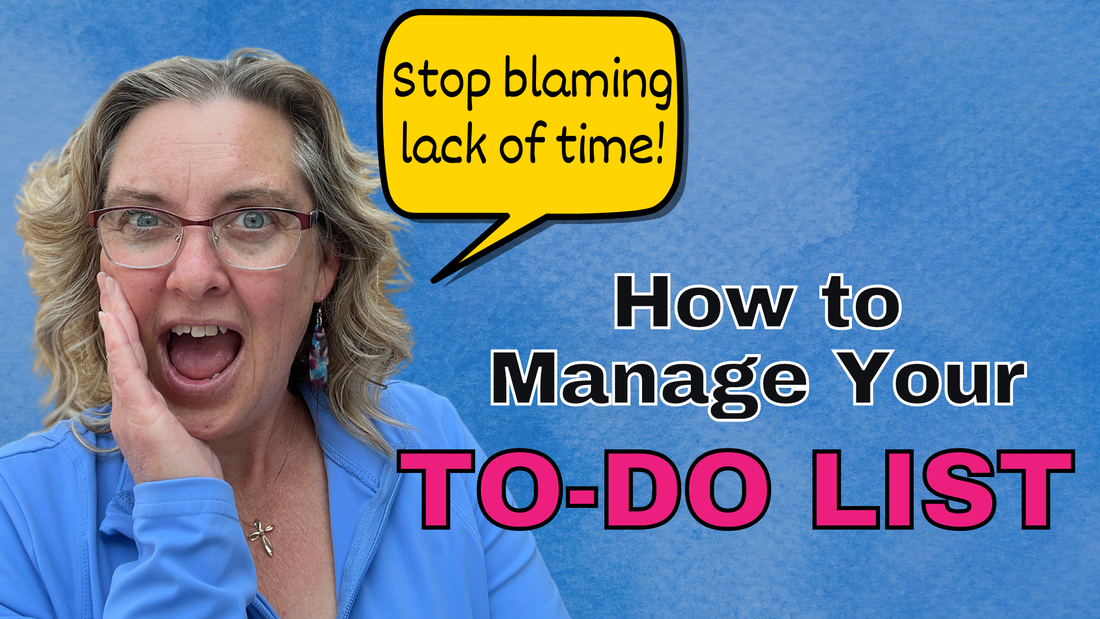
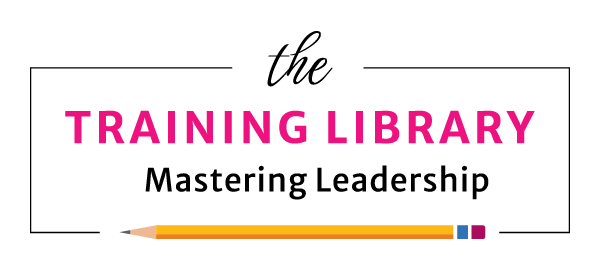
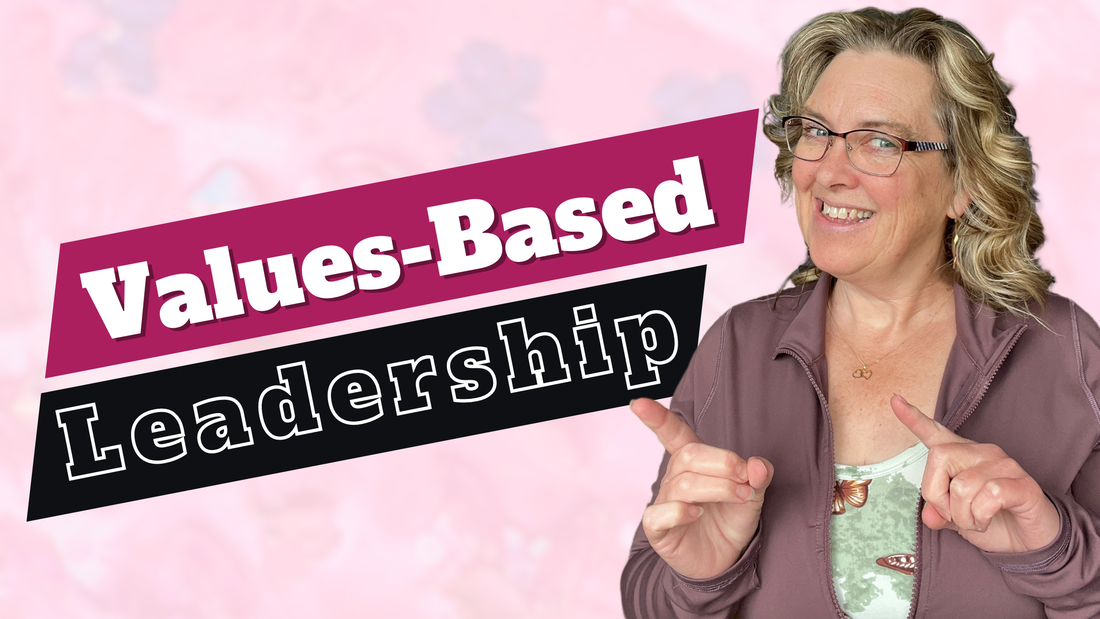
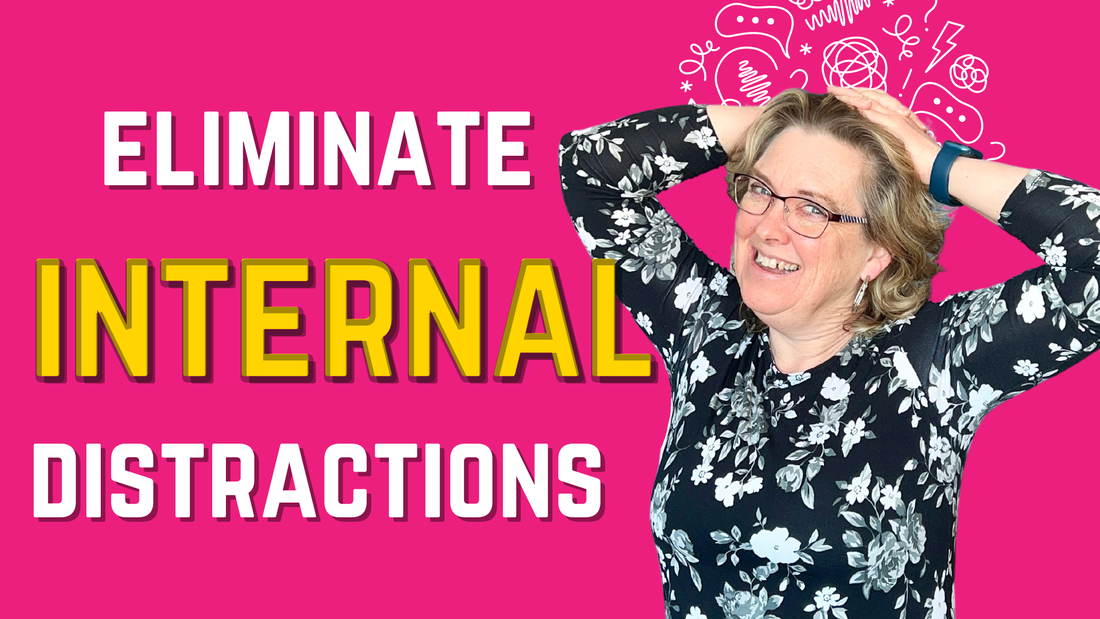
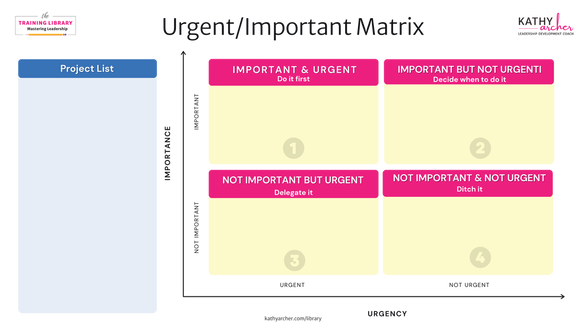
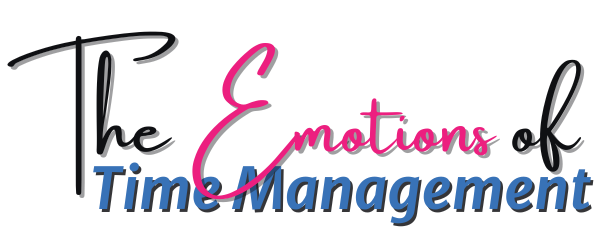



 RSS Feed
RSS Feed
